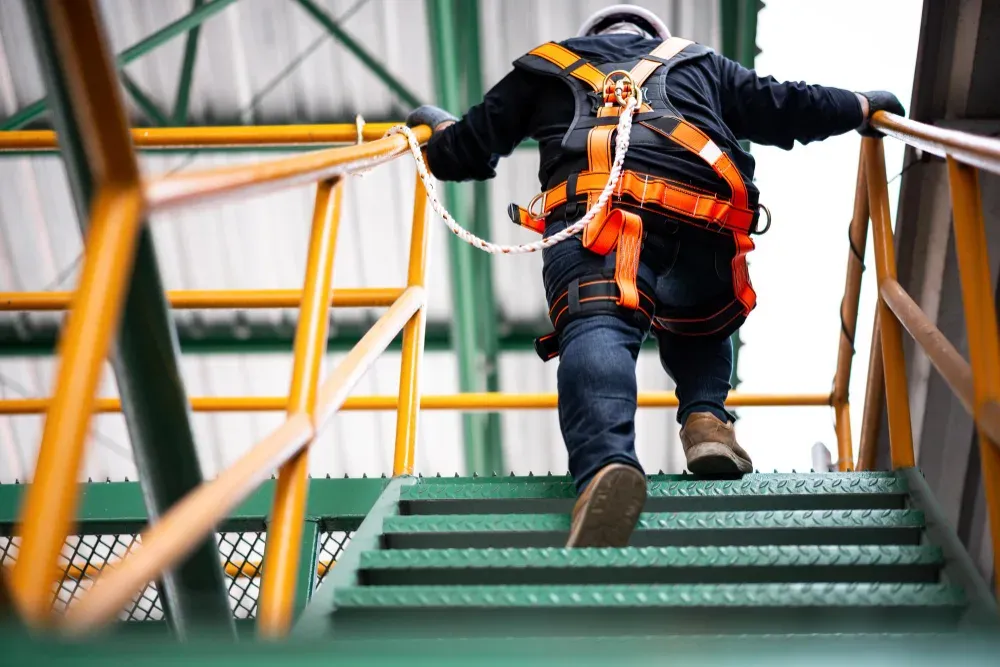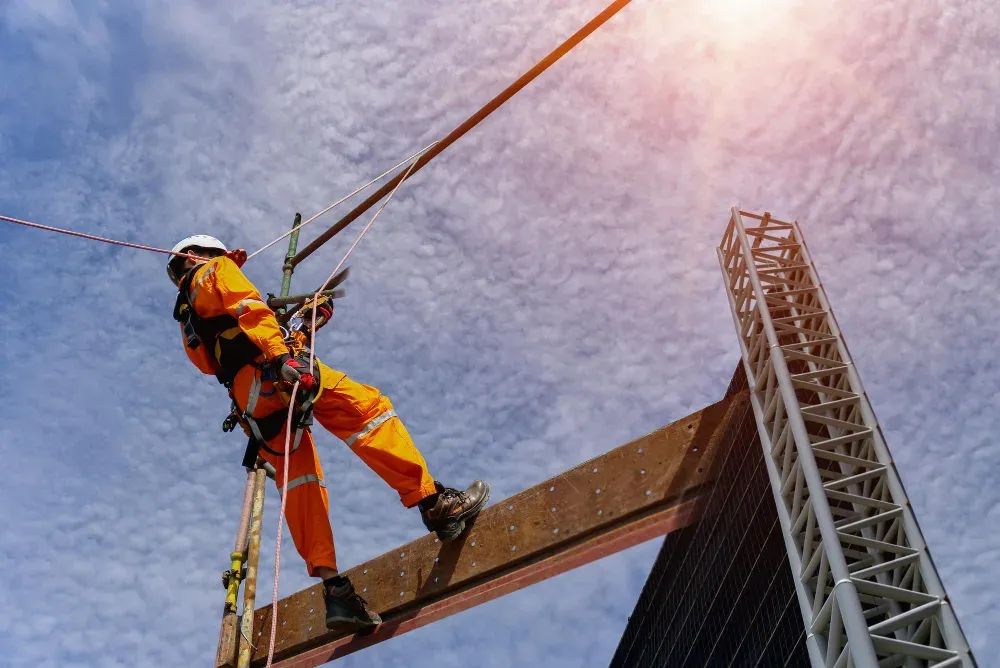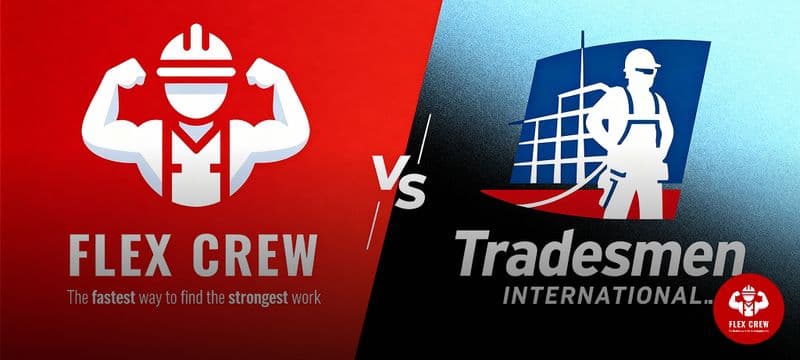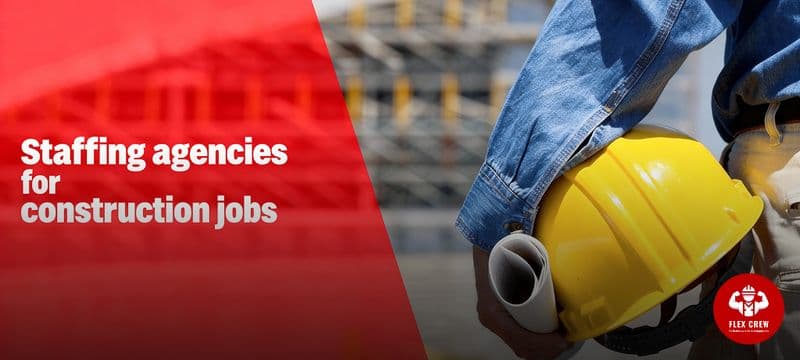Fall construction work presents unique challenges that combine seasonal hazards with traditional workplace dangers. As construction teams race to complete projects before winter weather arrives, understanding proper safety protocols becomes critical for protecting workers and ensuring project success. The combination of shortened daylight hours, unpredictable weather, and project deadline pressures creates a perfect storm of safety risks that require specialized attention and preparation.
The Reality of Construction Fall Fatalities
The statistics paint a sobering picture of construction safety risks. Fatalities caused by falls from elevation continue to be a leading cause of death for construction employees, accounting for 421 of the 1,075 construction fatalities recorded in 2023. Even more concerning, in 2023, about 1 in 5 (20.8 percent) workplace deaths occurred in the construction industry and 38.5 percent of these deaths were due to falls, slips, and trips.
These aren't just numbers—they represent preventable tragedies that devastate families and communities. The construction industry accounted for 47.8 percent of all fatal falls, slips, and trips in 2023, highlighting the urgent need for enhanced safety measures, especially during challenging autumn conditions.
Understanding which construction sectors face the highest fall risks helps prioritize safety efforts. Within the construction industry in 2023, roofing contractors accounted for 26.0 percent of fatalities due to falls, slips, and trips with 110 deaths. Residential building construction accounted for another 14.7 percent with 62 deaths. This data reveals that roofing work and residential construction present the highest risks, making specialized safety protocols essential during autumn when weather conditions amplify these dangers.

OSHA Fall Protection Requirements
Fall protection regulations form the backbone of construction safety, but understanding and implementing them becomes more complex during autumn construction. OSHA requires that fall protection be provided at elevations of four feet in general industry workplaces, five feet in shipyards, six feet in the construction industry and eight feet in longshoring operations. However, these requirements become more critical during autumn construction when weather conditions amplify existing risks.
Employers have specific obligations that extend beyond simply providing equipment. OSHA requires employers to:
- Provide working conditions that are free of known dangers
- Keep floors in work areas in a clean and, so far as possible, a dry condition
- Select and provide required personal protective equipment at no cost to workers
- Train workers about job hazards in a language that they can understand
During fall construction, these requirements become more challenging to implement due to weather conditions, but they remain absolutely essential for worker safety. The regulatory framework requires employers to guard every floor hole into which a worker can accidentally walk, provide guard rails and toe-boards around elevated platforms, and ensure fall protection when working over dangerous equipment regardless of height.
Autumn-Specific Construction Hazards
Fall construction presents environmental hazards that compound traditional workplace risks in ways that many safety programs don't adequately address. The seasonal transition creates a unique combination of weather patterns, equipment challenges, and human factors that require specialized safety approaches.
Wet and slippery conditions become the norm rather than the exception during autumn construction. Morning frost creates invisible slip hazards that can turn routine tasks into dangerous situations. Workers accustomed to summer conditions often underestimate how quickly weather can change and how dramatically it affects work surface safety. Fallen leaves present a double hazard—they hide uneven ground surfaces and become extremely slippery when wet, creating fall risks that extend beyond the obvious elevated work scenarios.
Weather visibility issues significantly impact construction safety during autumn months. Reduced daylight hours mean more work occurs during low-light conditions when depth perception and hazard recognition become more difficult. Fog and overcast skies can reduce visibility to dangerous levels, particularly for crane operators and workers coordinating ground activities. Earlier sunsets often catch crews off guard, creating rushed situations where workers may take shortcuts or skip safety procedures to complete tasks before darkness arrives.
Equipment performance changes dramatically in cold weather, affecting both safety systems and construction tools:
- Hydraulic systems operate slower and less predictably in cold temperatures
- Metal surfaces become more slippery and harder to grip
- Battery-powered safety equipment may have reduced performance
- Materials become brittle and may behave differently than expected
Personal Protective Equipment for Fall Construction
Selecting and using appropriate personal protective equipment during fall construction requires balancing fall protection needs with weather-related challenges. Traditional PPE approaches often fail to account for the complexities of cold weather work, where bulky clothing can interfere with safety equipment effectiveness.
Fall protection equipment must be adapted for cold weather conditions without compromising safety standards. Full-body harnesses need adjustment for workers wearing multiple layers of clothing, and safety managers must ensure that bulky winter gear doesn't prevent proper harness fitting or interfere with equipment operation. Lanyards and lifelines must be rated not only for dynamic loads but also for the temperature variations and potential ice formation that can affect their performance.
Essential PPE considerations for autumn construction include:
- Insulated gloves that maintain adequate grip for safety equipment operation
- Non-slip footwear designed specifically for wet and icy construction conditions
- High-visibility clothing with reflective elements for reduced daylight hours
- Layered clothing systems that provide warmth without interfering with safety harnesses
The integration of weather protection with fall protection requires careful planning and often specialized equipment that can perform effectively in changing conditions while maintaining OSHA compliance standards.

Safety Training and Emergency Response
Traditional fall protection training often fails to address the specific challenges of seasonal construction work. Workers need education that goes beyond standard OSHA requirements to understand how weather conditions affect every aspect of job site safety.
Weather-specific hazard recognition becomes a critical skill during autumn construction. Workers must learn to identify slip hazards from frost, leaves, and moisture that may not be immediately obvious. They need to understand how wind conditions affect not only their own stability but also the behavior of materials, equipment, and temporary structures around them. Temperature changes can affect equipment performance in ways that create new hazards, and workers must understand these relationships to make informed safety decisions.
Train workers about job hazards in a language that they can understand takes on added importance during fall construction when communication about rapidly changing conditions becomes critical for safety. Training programs must include practical exercises that simulate autumn weather conditions and allow workers to experience how environmental factors affect their ability to work safely.
Emergency response planning becomes more complex during autumn construction due to weather-related factors that can complicate rescue operations:
- Cold weather rescue techniques and hypothermia prevention protocols
- Communication systems that function during storms and reduced visibility
- Equipment positioning that accounts for changing ground conditions
- Response time adjustments for weather-related access challenges
The National Safety Stand-Down Initiative
Participating in organized safety awareness programs provides construction companies with structured opportunities to address fall prevention. The National Safety Stand-Down raises fall hazard awareness across the country in an effort to stop fall fatalities and injuries. This initiative provides a framework for companies to focus attention on fall prevention in a systematic way.
A Safety Stand-Down is a voluntary event for employers to talk directly to employees about safety. Any workplace can hold a stand-down by taking a break to focus on "Fall Hazards" and reinforcing the importance of "Fall Prevention". The program's flexibility allows companies to tailor safety discussions to their specific needs and seasonal challenges.
Companies can conduct a Safety Stand-Down by taking a break to have a toolbox talk or another safety activity such as conducting safety equipment inspections, developing rescue plans, or discussing job specific hazards. This approach creates opportunities for workers to share their concerns and experiences while management demonstrates commitment to safety priorities.
Project Planning for Fall Construction Safety
Successful fall construction requires acknowledging that weather-related delays are inevitable and planning accordingly rather than hoping for favorable conditions. Many construction accidents occur when teams attempt to maintain summer productivity schedules despite autumn weather challenges.
Realistic scheduling must account for the increased complexity of autumn construction work. Weather delays aren't just inconveniences—they're necessary safety precautions that should be built into project timelines from the beginning. Companies that include buffer time for weather-related delays often complete projects more efficiently than those that maintain unrealistic schedules and end up dealing with weather-related accidents or extended delays.
Weather-responsive strategies require flexibility and preparation rather than simply reacting to conditions as they occur. Successful construction teams develop decision trees that help them determine when conditions warrant work stoppages and what alternative activities can be performed safely. This approach maintains productivity while prioritizing safety, creating better outcomes for both workers and project schedules.
Effective project planning should include:
- Buffer time of 20-30% for weather-related delays during autumn months
- Alternative indoor work options during adverse weather conditions
- Clear weather thresholds for different types of construction activities
- Coordination with weather forecasting services for improved planning accuracy
Best Practices for Construction Staffing
Construction staffing agencies play a crucial role in fall construction safety by ensuring workers are properly trained and prepared for seasonal challenges. Agencies like FlexCrew USA must go beyond basic qualification verification to ensure workers understand the unique demands of autumn construction work.
Worker preparation should include seasonal safety training specific to local climate conditions, verification of fall protection equipment certification, and assessment of experience with cold weather construction. This preparation helps prevent accidents and ensures that temporary workers can integrate safely into existing crews without compromising job site safety standards.
Ongoing support during challenging autumn conditions includes regular safety check-ins, access to appropriate PPE and safety equipment, and flexible scheduling that accommodates weather-related delays. Effective staffing agencies work closely with construction companies to maintain safety standards while meeting project deadlines.
Frequently Asked Questions About Fall Construction Safety
What are the OSHA height requirements for fall protection in construction?
OSHA requires fall protection at six feet in construction. However, protection is also required when working over dangerous equipment regardless of height.
Which construction jobs have the highest fall fatality rates?
Roofing contractors lead with 110 deaths (26% of construction fall fatalities), followed by residential building construction with 62 deaths (14.7%) and painting contractors with 29 deaths.
How does cold weather affect fall protection equipment?
Cold weather makes harnesses harder to fit over bulky clothing, reduces lanyard flexibility, and can cause metal components to become slippery. Equipment requires more frequent inspection and may need adjustment for temperature changes.
What should be included in autumn construction safety training?
Training should cover weather hazard recognition, cold weather equipment use, emergency procedures for adverse conditions, and communication during low visibility situations.
When should construction work be stopped due to weather conditions?
Stop work during high winds (25-30+ mph), heavy rain, fog that reduces visibility, or icy conditions. Companies should establish clear weather thresholds and monitor conditions continuously.
How can construction companies prepare for weather-related delays?
Build 20-30% buffer time into autumn schedules, plan alternative indoor work options, partner with weather services, and create clear decision criteria for weather-related work stoppages.
About FlexCrew USA
FlexCrew USA specializes in providing safety-trained construction workers prepared for the unique challenges of seasonal construction work. Our comprehensive training programs ensure workers understand fall protection requirements and weather-related safety protocols.



